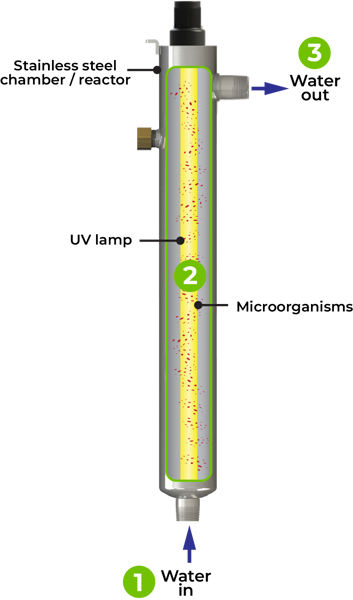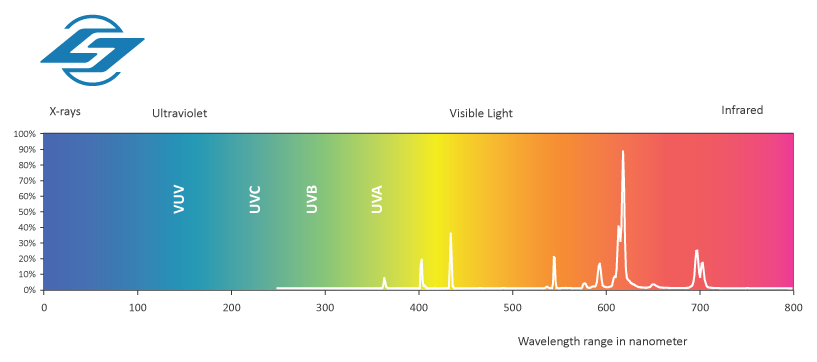Some Known Facts About Uvc Light.
Some Known Facts About Uvc Light.
Blog Article
Uvc Light Fundamentals Explained
Table of ContentsHow Uvc Light can Save You Time, Stress, and Money.The Basic Principles Of Uvc Light What Does Uvc Light Mean?Getting My Uvc Light To WorkThe Definitive Guide for Uvc LightHow Uvc Light can Save You Time, Stress, and Money.
A new kind of ultraviolet light that might be safe for people took much less than 5 minutes to reduce the degree of indoor air-borne germs by more than 98%, a joint study by scientists at Columbia University Vagelos University of Physicians and Surgeons and in the U.K. has located. Even as microorganisms proceeded to be sprayed right into the room, the level remained really low as long as the lights were on.However until currently these researches had just been conducted in little speculative chambers, not in full-sized rooms simulating real-world conditions. In the present study, scientists at the University of St. Andrews, University of Dundee, University of Leeds, and Columbia College checked the effectiveness of far-UVC light in a large room-sized chamber with the same air flow price as a common home or office (about 3 air modifications per hour).
The effectiveness of various techniques to decreasing indoor virus levels is typically determined in regards to equivalent air modifications per hour. In this study, far-UVC lights produced the equivalent of 184 equal air exchanges per hour. This goes beyond any kind of various other method to disinfecting occupied interior areas, where five to 20 equivalent air modifications per hour is the very best that can be achieved practically.
How Uvc Light can Save You Time, Stress, and Money.

The primary criteria of UV-C sanitation are wavelength, dosage, family member humidity, and temperature. There is no consensus concerning their optimal values, but, in basic, light at a high dose and a spectrum of wavelengths including 260 nm is liked in an atmosphere at room temperature level with reduced loved one moisture. This light can be generated by mercury-vapour, light-emitting diode (LED), pulsed-xenon, or excimer lights.
There are health and safety and security dangers linked with the UV-C modern technology when used in the distance of individuals. UV-C disinfection systems have encouraging functions and the possible to boost in the future. Information bordering the various specifications affecting the innovations' performance in medical facility environment are required. As a result UV-C sanitation need to currently be taken into consideration for low-level as opposed to high-level sanitation.
An additional application developed in 1910 when UV light was made use of to disinfect water. Nowadays, UV light is made use of for water, air, food, surface, and medical tools disinfection.
More About Uvc Light
This results in the disruption of DNA or RNA, leading to the inactivation of the micro-organism. UV-C-induced DNA disruption usually consists of the bonding of two adjoining thymine (or cytosine) bases instead of the traditional connecting of a base with its corresponding base on the various other hair.

Dark repair service, on the various other hand, needs multiple enzymes and nutrients for energy [6] It is necessary to understand whether final inactivation results have actually taken into consideration the occurrence of awakening considering that it might cause 60% of the achieved inactivation being turned around [7] Moreover, anomalies can occur upon UV-C exposure considering that this exposure can result in the source of intra-strand cyclobutyl-pyrimidine dimers in DNA [ 6] The UV-C area is made use of for sanitation however there is no consensus on the exact optimal wavelength. Bacterial DNA and RNA have peak absorbances of light at 260265 nm and around 260 nm, specifically [6] As a result light at 260 nm can trigger one of the most disturbance. However, numerous micro-organisms are most prone to a little different wavelengths.
The Facts About Uvc Light Revealed
It even has an added benefit by decreasing photoreactivation with a decline of photolyase [9] On the other hand, it has technical ramifications because the total energy of the beam is after that separated over all present wavelengths. Therefore, a micro-organism that is vulnerable to 254 nm light will be suspended a lot more by a light Check Out Your URL that sends out only light at 254 nm than a light that discharges a wavelength range at equivalent total energy.
Exposure times of 1045 minutes for space disinfection and 25 s to 5 minutes for medical devices were come across in literature. The intensity is vice versa symmetrical to the made even range in between the source of light and the surface and is as a result defined at the surface area in the dosage calculation formula [14]
Additionally, the output of a lamp decreases over time, so it is recommended to calculate the dose at the end of lamp life, which is rep of a worst-case circumstance. The dose additionally affects the amount of photoreactivation.
Zhang et al. observed a change in UV irradiance of 34% when the RH boosted from 50% to 90% [18] The amount of RH influence on UV performance depends on today micro-organism and is extra noticeable for germs than for viruses [16] The impact of temperature level depends on the light source.
The Buzz on Uvc Light


This is called far UV-C modern technology Source and is a relatively brand-new sanitation technique with limited expertise regarding its performance. This makes it riskier to totally count on this innovation for disinfection in the hospital and it is for that reason not commonly used [21] Nonetheless, it additionally has benefits such as a decreased threat for use near individuals due to a lower infiltration deepness right into the skin and eyes [ 26]
In research study, the outcomes on pulsed versus constant UV-C sanitation effectiveness vary. When comparing pulsed and constant light it is essential to maintain various other variables such as wavelength and dose constant. Nyangaresi et al. and Sholtes et al. both located that pulsed or continuous light discharged by LEDs brought about similar log10 reductions [15,28]
The Of Uvc Light
In instance ozone is not needed for disinfection, a customized light can be utilized. For mercury-vapour lamps, drugged quartz glass or specialized soft glass can strain short-wave UV-C light. For pulsed-xenon, doped quartz can be utilized as well [30] UV-C has appealing functions view publisher site for sanitation such as automatic disinfection, being less time-consuming than extensively utilized handbook or chemical sanitations, leaving no unsafe residuals, and being environmentally pleasant (if no mercury-vapour lights are utilized) [31,32]
Report this page